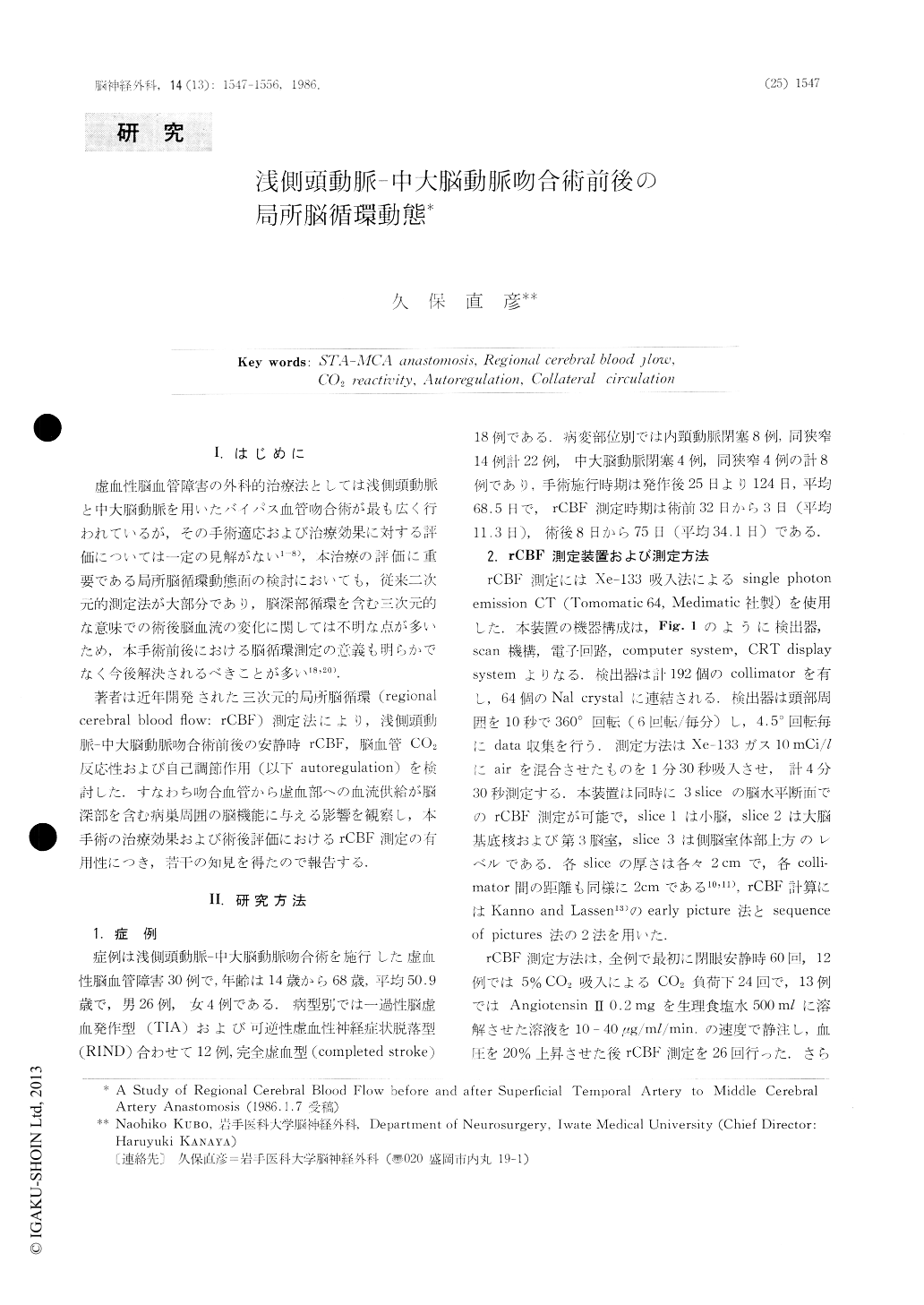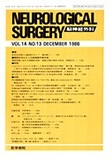Japanese
English
- 有料閲覧
- Abstract 文献概要
- 1ページ目 Look Inside
I.はじめに
虚血性脳血管障害の外科的治療法としては浅側頭動脈と中大脳動脈を用いたバイパス血管吻合術が最も広く行われているが,その手術適応および治療効果に対する評価については一定の見解がない1-8),本治療の評価に重要である局所脳循環動態面の検討においても,従来二次元的測定法が大部分であり,脳深部循環を含む三次元的な意味での術後脳血流の変化に関しては不明な点が多いため,本手術前後における脳循環測定の意義も明らかでなく今後解決されるべきことが多い18,20).
著者は近年開発された三次元的局所脳循環(regionalcerebral blood flow:rCBF)測定法により,浅側頭動脈—中大脳動脈吻合術前後の安静時rCBF,脳血管CO2反応性および自己調節作用(以下autoregulation)を検討した.すなわち吻合血管から虚血部への血流供給が脳深部を含む病巣周囲の脳機能に与える影響を観察し,本手術の治療効果および術後評価におけるrCBF測定の有用性につき,若干の知見を得たので報告する.
Regional cerebral blood flow (rCBF), using a single photon emission CT with die-133 inhalation method, was measured before and after the operation in 30 patients who underwent a superficial temporal artery to middle cerebral artery (STA-MCA) anastomosis. The purpose of this study is to assess the effect of STA-MCA anastomosis from the standpoint of hemo-dynamics and the results obtained were as follows:
1. rCBF at rest incresed after the operation, which was approximately 10% alterations and was localized in temporal region of operated hemisphere and frontal region of non-operated hemisphere respectively.

Copyright © 1986, Igaku-Shoin Ltd. All rights reserved.


